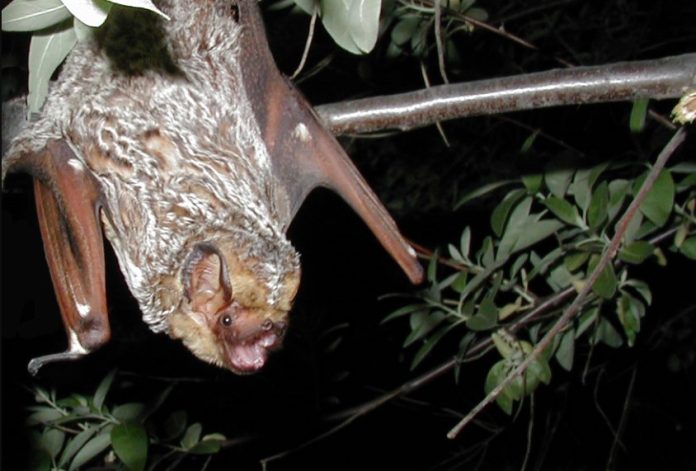By Tom Joyce
(The Center Square) – Researchers at Oregon State University were the first to see an at-risk bat flying over the open ocean – something that could impact future offshore wind development.
An OSU researcher was on a research cruise focused on marine mammals and seabirds, but he saw something he wasn’t expecting. It was the first-ever documented sighting of a hoary bat flying over the open ocean, according to the school.
The bat was spotted in the Humboldt Wind Energy Area approximately 30 miles off the northern California coast.
“The Humboldt area has been leased for potential offshore energy development, and the hoary bat is the species of bat most frequently found dead at wind power facilities on land,” the school said.
OSU faculty research assistant Will Kennerley first saw the bat just after 1 p.m. on October 3, 2022, in what he described as excellent conditions. He and his colleagues documented this sighting with a paper in the Journal of North American Bat Research.
“I have spent a lot of time at sea in all oceans of the world, and I’ve seen a lot of amazing things,” Lisa Ballance, director of OSU’s Marine Mammal Institute, said. “A hoary bat was a first for all of us. It’s a reminder of the wonder of nature and of its vulnerability.”
Hoary bats are highly migratory animals. They have been seen on the Farallon Islands near San Francisco and in Bermuda, well off the east coast of the United States, but there hadn’t been reported instances of them being spotted from ships in North America, the report said.
Hoary bats are capable of flying as high as 2,400 meters. That may explain why people rarely see them offshore, since humans often cannot spot such a small animal so high in the sky, the report said.
Along with Oregon State marine ecologist Leigh Torres, Kennerley was aboard the R/V Pacific Storm as part of the MOSAIC Project. The project “studies the distributions and densities of seabirds and marine mammals around potential offshore wind energy areas,” the release said.
The bat was spotted during a seabird survey about 50 kilometers off the coast of Arcata, California. It was flying somewhere between five and 10 meters above the ocean. It came within 50 meters of the vessel.
“We, of course, didn’t set out to look for bats at sea, but this demonstrates the value of having observers out on the water ready and able to document unexpected observations like this,” Kennerley said in the release. “I think surprises like this are one of the most exciting parts of doing science.”
The hoary bat population in the Pacific Northwest is declining at an alarming rate, the report said.
Declining bat populations cause many problems for ecosystems, according to the report. That’s because bats help ecosystems with pollination, pest control, and seed dispersion.
Both wind energy production and the invasive bat disease white-nose syndrome have threatened bat populations in recent years.
“Wind power affects bats through collision and barotrauma, which refers to injuries caused by rapid changes in atmospheric pressure like what can occur around the blades of a wind turbine,” the release said. “Examination of dead bats collected near turbines often reveals signs of the internal hemorrhaging associated with barotrauma rather than collision.”
The scientists on the Pacific Storm said their findings provide more evidence that the hoary bats occasionally use offshore habitats. They said it was notable the sighting happened within a leased offshore wind energy area as it shows the potential hoary bats to be impacted by offshore energy development.
“Our study only documents a single individual but nonetheless suggests a greater need for studies looking at threats bats may face at sea,” Kennerley said in the release.
The discovery came as a part of research funded by the U.S. Department of Energy and by the U.S. Department of Interior, Bureau of OceanEnergy Management, Environmental Studies Program, a spokesman for OSU told The Center Square.
Donald Solick of the Electric Power Research Institute and Vesper Bat Detection Services was the paper’s corresponding author. OSU marine ecologist Rachael Orben was also a co-author of the paper.
The revelation comes as Oregon attempts to expand offshore wind to meet its goal of having 100% renewable energy by 2040.
Oregon has been working to develop offshore wind. The U.S. Bureau of Ocean Energy Management finalized two offshore Wind Energy Areas for the state last month. However, Oregon is not expected to have offshore turbines until the mid-2030s, according to S&P Global Commodity Insights.
Tom Joyce is a contributor to The Center Square.
Originally published by The Center Square. Republished with permission.
To read more about environmental issues and wind power, click here.


























